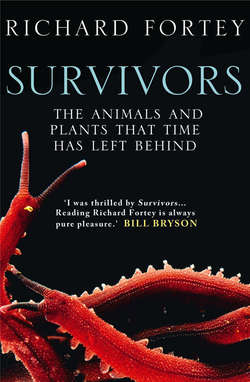Читать книгу Survivors: The Animals and Plants that Time has Left Behind - Richard Fortey - Страница 5
PROLOGUE
ОглавлениеThese anomalous forms may almost be called living fossils; they have endured to the present day, from having inhabited a confined area, and from having thus been exposed to less severe competition.
CHARLES DARWIN, The Origin of Species
Evolution has not obliterated its tracks as more advanced animals and plants have appeared through geological time. There are, scattered over the globe, organisms and ecologies which still survive from earlier times. These speak to us of seminal events in the history of life. They range from humble algal mats to hardy musk oxen that linger on in the tundra as last vestiges of the Ice Age. The history of life can be approached through the fossil record; a narrative of forms that have vanished from the earth. But it can also be understood through its survivors, the animals and plants that time has left behind. My intention is to visit these organisms in the field, to take the reader on a journey to the exotic, or even everyday, places where they live. There will be landscapes to evoke, boulders to turn over, seas to paddle in. I shall describe the animals and plants in their natural habitat, and explain why they are important in understanding pivotal points in evolutionary history. So it will be a journey through time, as well as around the globe.
I have always thought of myself as a naturalist first, and a palaeontologist second, although I cannot deny that I have spent most of my life looking at thoroughly dead creatures. This book is something of a departure for me, with the focus switched to living organisms that help reveal the tree of life (see endpapers). I will frequently return to considering fossils to show how my chosen creatures root back into ancient times. I have also broken my usual rules of narrative. The logical place to start is at the beginning, which in this case would mean with the oldest and most primitive organisms. Or I could start with the present and work backwards, as in Richard Dawkins’ The Ancestor’s Tale. Instead, I have opted to start somewhere in the middle. This is not perversity on my part. It seemed appropriate to start my exploration in a place, biologically speaking, that is familiar to me. The ancient horseshoe crabs of Delaware Bay were somehow fitting, not least on account of their trilobite connections. Amid all the concern about climate change and extinction, it is encouraging to begin with an organism whose populations can still be counted in their millions. From this starting point somewhere inside the great and spreading tree of life I can climb upwards to higher twigs if I wish, or maybe even delve downwards to find the trunk. Let us begin to explore.
